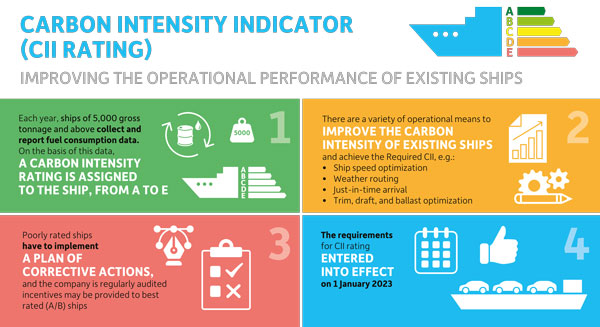Net zero shipping strategies
As the maritime sector looks to reduce its greenhouse gas emissions, fostering collaboration between cement producers and cement carrier operators can be of benefit to both industries. Decarbonisation options for both existing and newly constructed vessels can also enable more effective and efficient shipping operations. By Lukky Prasetyo, PT Indobaruna Bulk Transport, Indonesia.

The International Maritime Organisation’s (IMO) Carbon Intensity Indicator (CII) came into force
on 1 January 2023 as a mandatory rating system for ships
The cement sector is under escalating pressure to reduce its carbon footprint, driven not only by societal expectations but also by the scrutiny of investors and governments. Notably, governments are increasingly seeking environmental impact assessments before allocating funds. As attention on CO2 emissions grows, there is a potential risk of cement companies facing public reproach similar to the scrutiny faced by oil, gas or mining firms in the past.
Producers have several options to decarbonise cement production. However, operational improvements are estimated to contribute only around 20 per cent to this reduction, emphasising the necessity for technological innovation and exploring new growth opportunities to accomplish the rest. In addition to production processes, cement cargo supply chains must also be taken into account.

